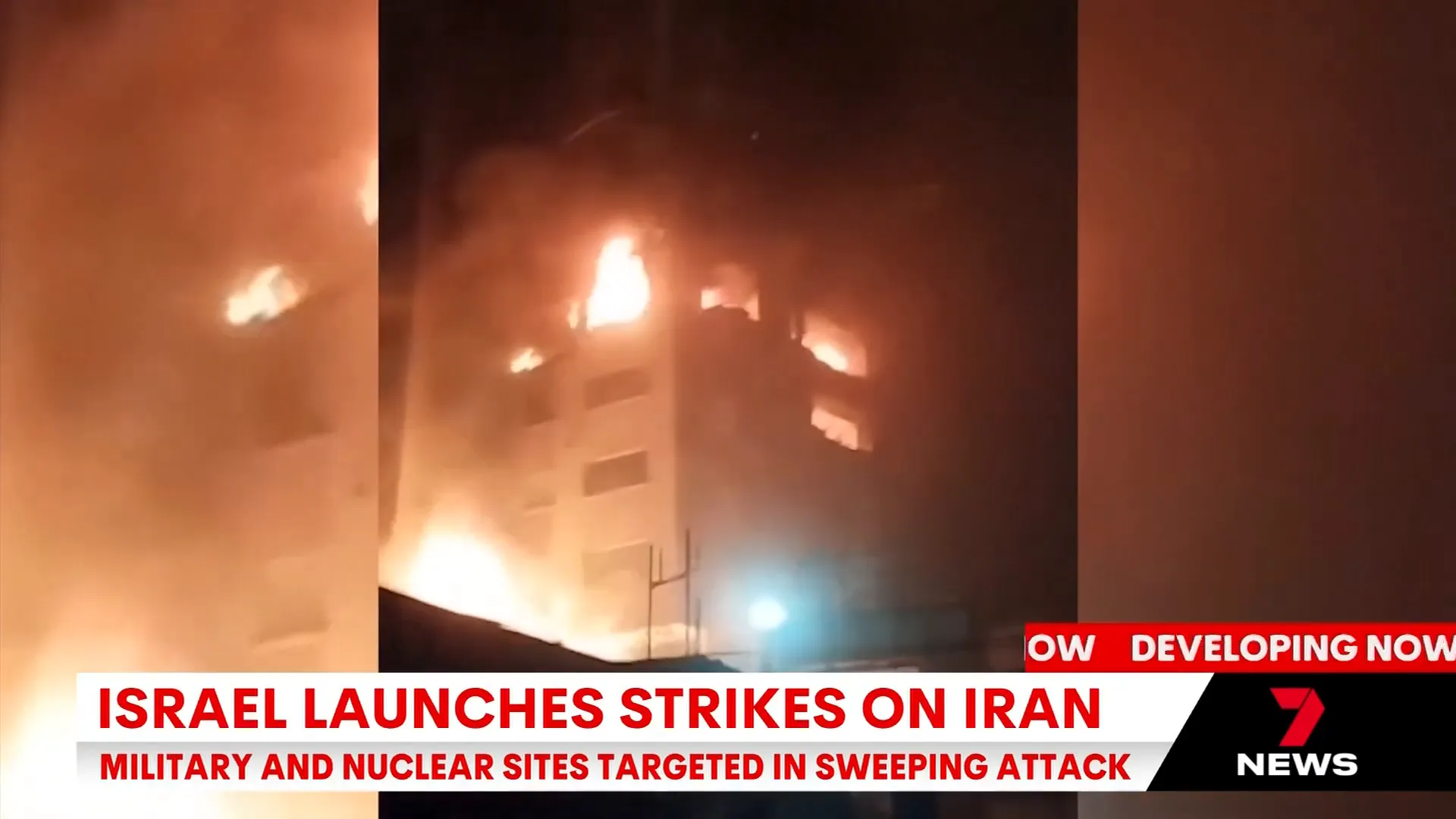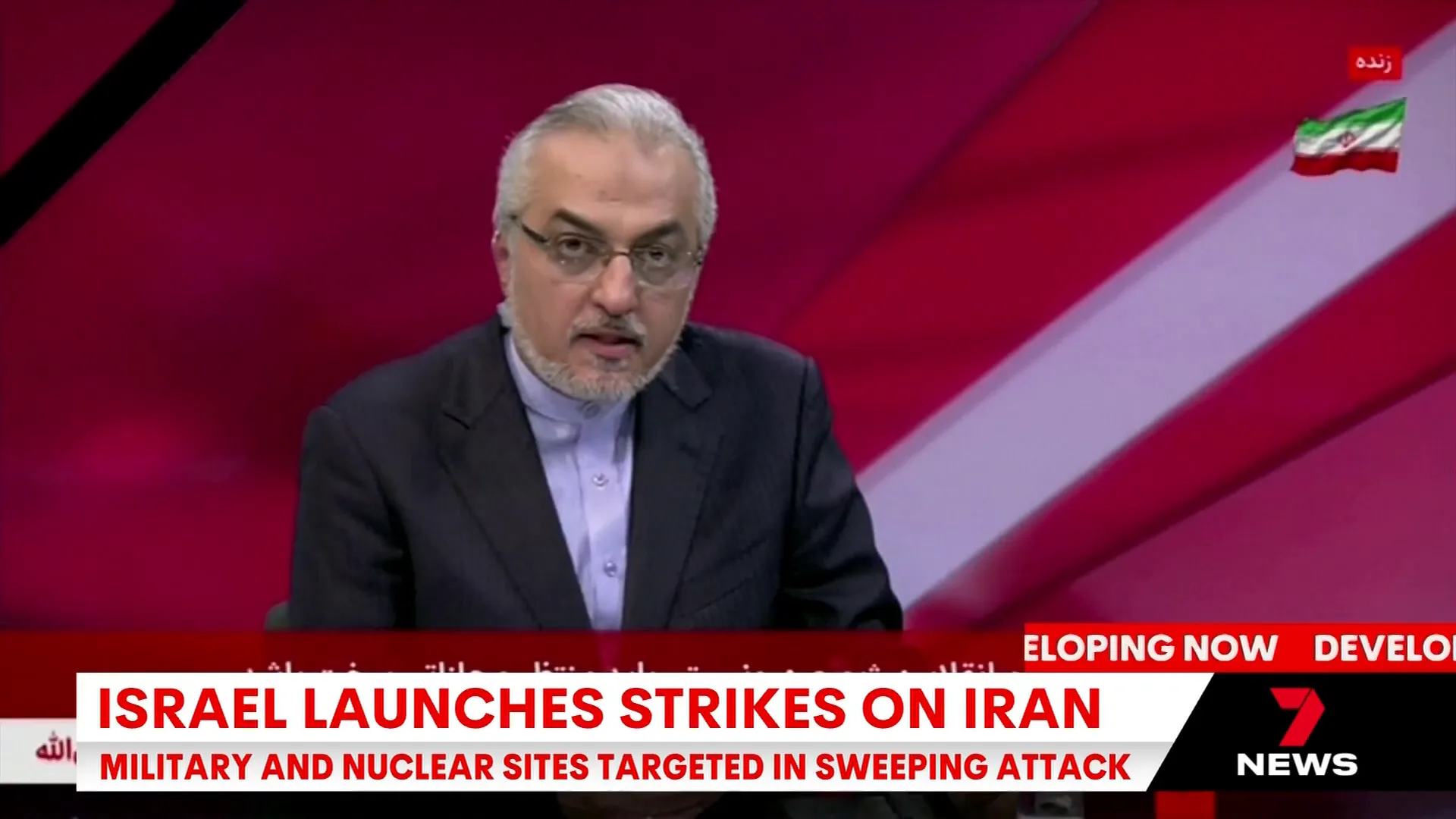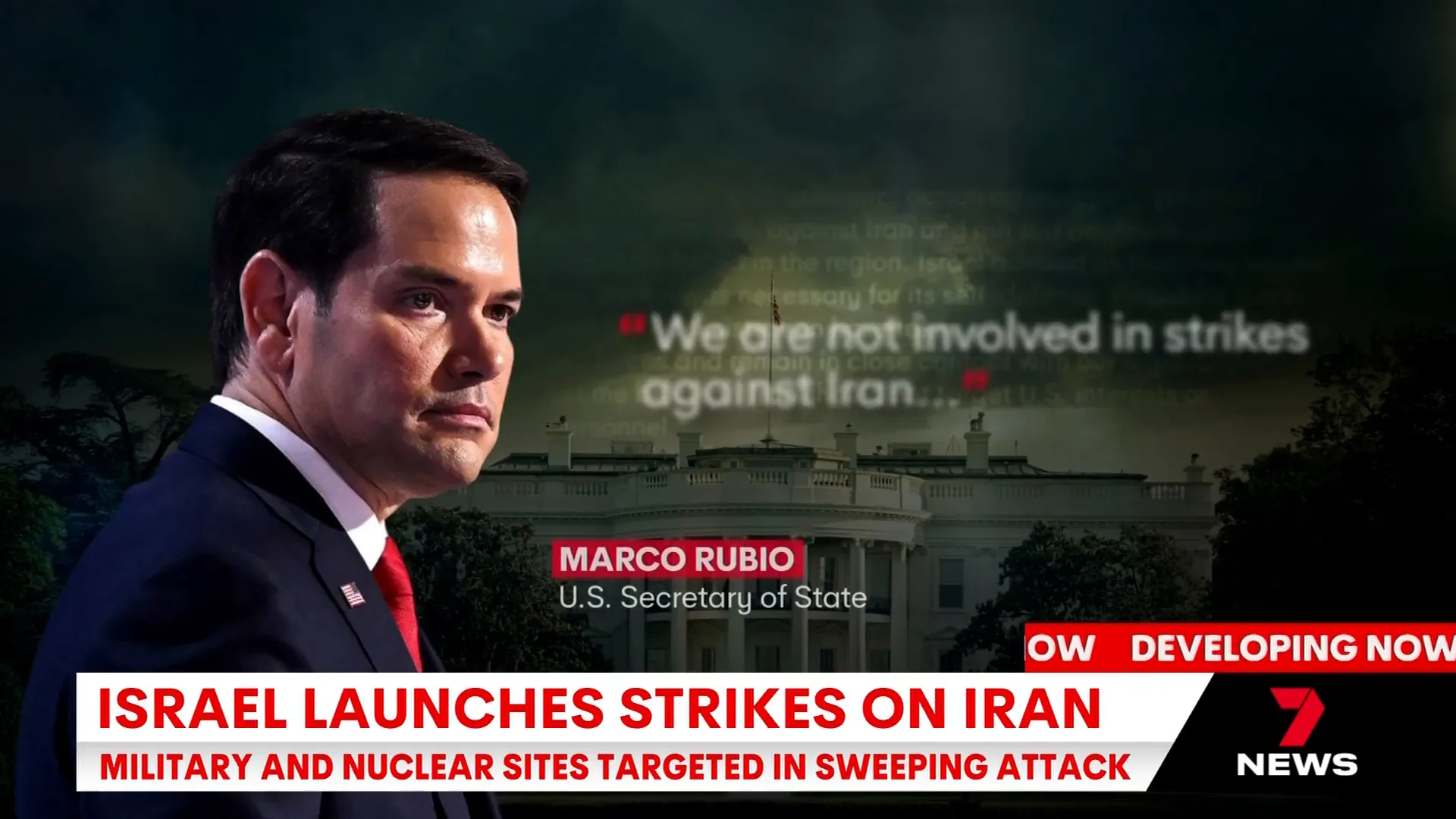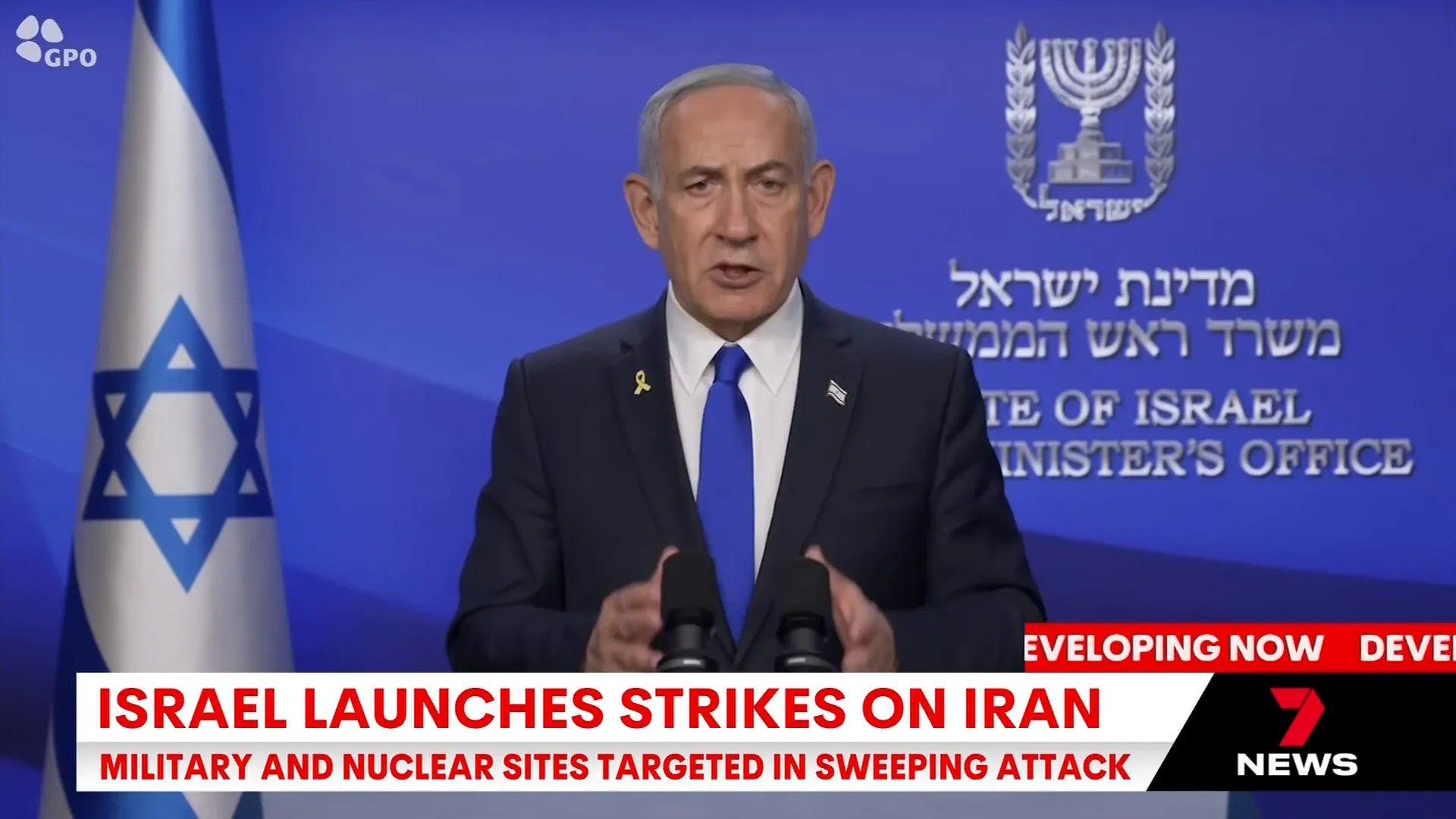Jun 16, 2025
Israel Launches Airstrikes on Iran, Risking All-Out War
The Middle East is once again on edge as tensions between Israel and Iran escalate dramatically. Earlier today, Israel launched a series of unprecedented airstrikes targeting Iran’s nuclear program and military infrastructure, signaling a bold and historic shift in the region’s geopolitical landscape. This article delves into the details of these airstrikes, the motivations behind them, and the potential ramifications for the region and the world.
Originally reported by 7NEWS Australia, this breaking news story highlights Israel’s decision to take military action after years of diplomatic stalemate and growing concerns over Iran’s nuclear ambitions. Here, we provide a comprehensive overview of the situation, supported by key insights and quotes from security experts and officials.
Table of Contents
- The Spark: Operation Rising Lion
- Iran’s Response and Regional Fallout
- The Role of the United States and International Implications
- Why Israel Took This Step
- What Happens Next?
- Frequently Asked Questions (FAQs)
- Conclusion
The Spark: Operation Rising Lion
In the early hours of the morning, Israel launched what it calls Operation Rising Lion, a coordinated wave of airstrikes stretching over 1,600 kilometers eastward into Iranian territory. The strikes targeted six military bases, multiple residential buildings, and notably, Iran’s primary nuclear enrichment facility located in Natanz.
The scale and precision of these attacks mark a significant escalation. Israeli fighter jets thundered over Tehran, shaking the Iranian capital with explosions that confirmed Israel’s resolve to halt Iran’s nuclear program by force if necessary.

Israel’s military strategy appears focused on crippling Iran’s nuclear and ballistic missile development capabilities, aiming to destroy infrastructure and eliminate key military and nuclear personnel. This approach reflects a shift from diplomatic efforts to direct military intervention, underscoring Israel’s frustration with stalled negotiations.
At the Point of No Return
According to Israel’s army chief of staff, Iyal Zamir, the nation is now “at the point of no return.” This declaration signals a historic campaign unlike any previous conflict, emphasizing the gravity of the situation. The strikes not only represent a tactical military operation but also a broader message that Israel will no longer tolerate what it perceives as an existential threat from Iran’s nuclear ambitions.

Iran’s Response and Regional Fallout
The Iranian government swiftly acknowledged the attacks, with its official news agency confirming the death of a high-ranking Revolutionary Guards commander. State television read a statement from Supreme Leader Ayatollah Ali Khamenei, who confirmed that several commanders and nuclear scientists were martyred in the strikes.
The Ayatollah’s statement also warned of severe consequences for Israel, underscoring the potential for a retaliatory escalation. This warning has sent shockwaves through the region, raising fears that the conflict could spiral into a broader war involving multiple nations.

Drone Attacks and Israeli Defense
As this article is being written, the Israeli Defense Forces (IDF) reported they are intercepting more than 100 attack drones launched by Iran targeting Israeli territory. This drone offensive indicates Iran’s immediate response to the airstrikes and escalates the conflict beyond a single strike operation, potentially involving asymmetric warfare tactics.
The Role of the United States and International Implications
The United States, Israel’s closest ally, has taken a cautious stance. The U.S. Secretary of State described Israel’s airstrikes as unilateral actions, emphasizing that the U.S. was not involved in the planning or execution of the operation. However, the U.S. has 40,000 troops stationed across the Middle East and has bolstered defenses at its bases in response to the rising tensions.
Senator Marco Rubio issued a stern warning to Tehran, stating, “Iran should not target U.S. interests or personnel.” This message highlights the delicate balance the U.S. is trying to maintain—supporting Israel’s right to self-defense while avoiding direct military engagement that could further destabilize the region.

Potential for Wider Conflict
The pressing question remains whether the United States can avoid being drawn into the conflict. With significant military presence in the region and strategic interests at stake, the risk of a broader war involving multiple countries is real. The fragile geopolitical environment means any misstep could have far-reaching consequences.
Why Israel Took This Step
Israel’s decision to launch these strikes is rooted in its national security concerns. For years, the Israeli government has expressed deep anxiety over Iran’s nuclear program, fearing the development of nuclear weapons that could threaten its survival. Despite extensive diplomatic efforts, including negotiations involving the United States, Israel has become increasingly skeptical of a peaceful resolution.
Prime Minister Benjamin Netanyahu’s government has publicly stated it has “given up on US negotiations” aimed at stopping Iran’s nuclear development. This shift reflects a prioritization of preemptive military action over diplomacy, driven by the belief that time is running out.
The Threat of a Nuclear Holocaust
Israeli officials have repeatedly warned that they refuse to be victims of a “nuclear holocaust” potentially perpetrated by the Iranian regime. This stark framing underscores the existential nature of the threat in the eyes of Israeli leadership and explains the willingness to undertake such a risky and aggressive operation.

What Happens Next?
The situation remains highly fluid and uncertain. As Israel continues to defend its airspace against drone attacks, the potential for further military escalation looms large. Iran’s response, possibly involving proxy groups or direct military action, could trigger a cycle of retaliation that engulfs the region in conflict.
International observers are closely monitoring developments, aware that this confrontation could reshape the Middle East’s geopolitical dynamics for years to come.
Possible Scenarios
- Continued Escalation: Both sides increase military actions, drawing in regional allies and possibly the United States.
- Diplomatic Intervention: Global powers step in to broker a ceasefire or renewed negotiations to prevent full-scale war.
- Prolonged Low-Intensity Conflict: The conflict becomes a series of tit-for-tat strikes and proxy engagements without open war.
Frequently Asked Questions (FAQs)
Why did Israel launch airstrikes on Iran now?
Israel launched airstrikes following years of failed negotiations to stop Iran’s nuclear program. The strikes aim to cripple Iran’s nuclear and missile capabilities and eliminate key military personnel to prevent the development of nuclear weapons.
What is Operation Rising Lion?
Operation Rising Lion is the codename for the recent Israeli airstrikes targeting multiple Iranian military bases and nuclear facilities, including the Natanz enrichment plant.
How has Iran responded to the airstrikes?
Iran confirmed the death of senior military and nuclear personnel and warned Israel of severe consequences. Additionally, Iran launched over 100 attack drones targeting Israeli territory, which the Israeli Defense Forces are actively intercepting.
Is the United States involved in the conflict?
The U.S. has stated it was not involved in the Israeli airstrikes but has increased defensive measures around its bases in the Middle East. The U.S. also warned Iran against targeting American interests or personnel.
What are the risks of this conflict escalating?
The conflict has the potential to escalate into a broader regional war involving multiple countries, especially if Iran retaliates aggressively or if the U.S. becomes directly involved. The situation remains highly volatile.
Conclusion
The recent Israeli airstrikes on Iran represent a dramatic and risky escalation in one of the most volatile regions of the world. With diplomatic avenues seemingly exhausted, Israel has taken decisive military action to prevent what it sees as an existential threat from Iran’s nuclear program. Iran’s retaliation and the involvement of international powers, particularly the United States, raise the stakes even higher.
As the world watches this unfolding crisis, the hope remains that cooler heads will prevail and that a devastating all-out war can be averted. However, as Israeli army chief of staff Iyal Zamir warned, we may already be at “the point of no return.” Only time will tell how this historic campaign will reshape the future of the Middle East.